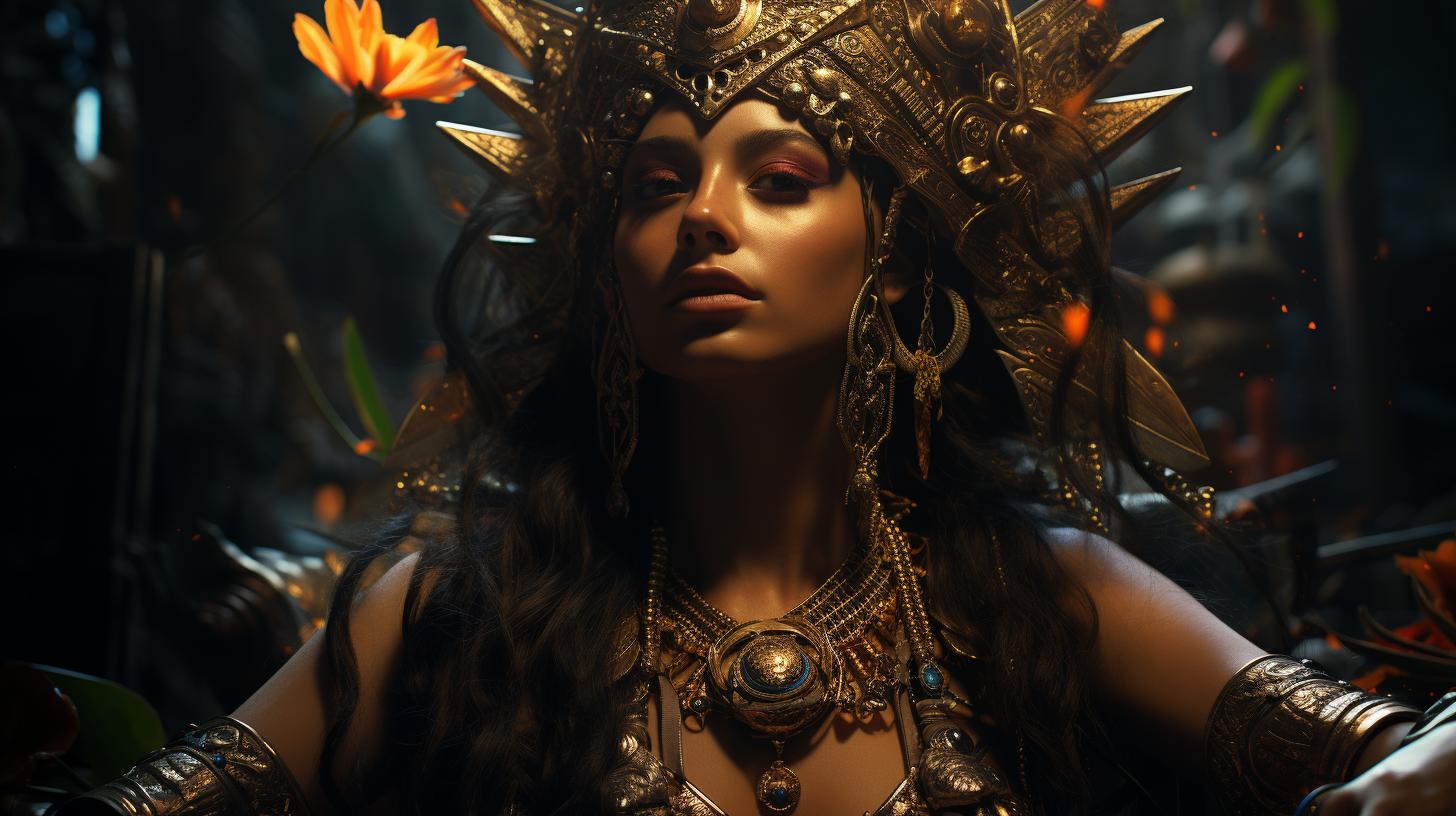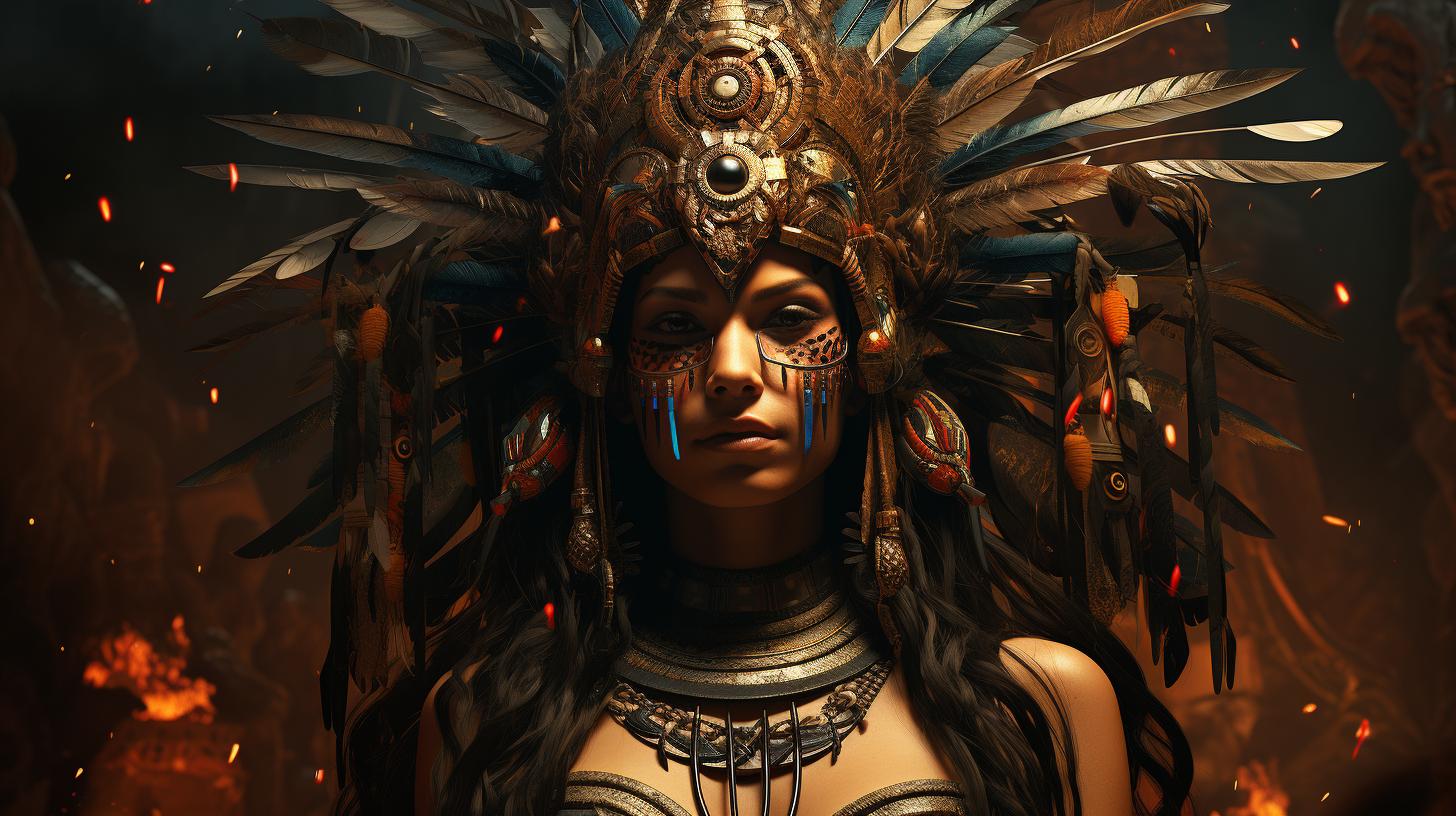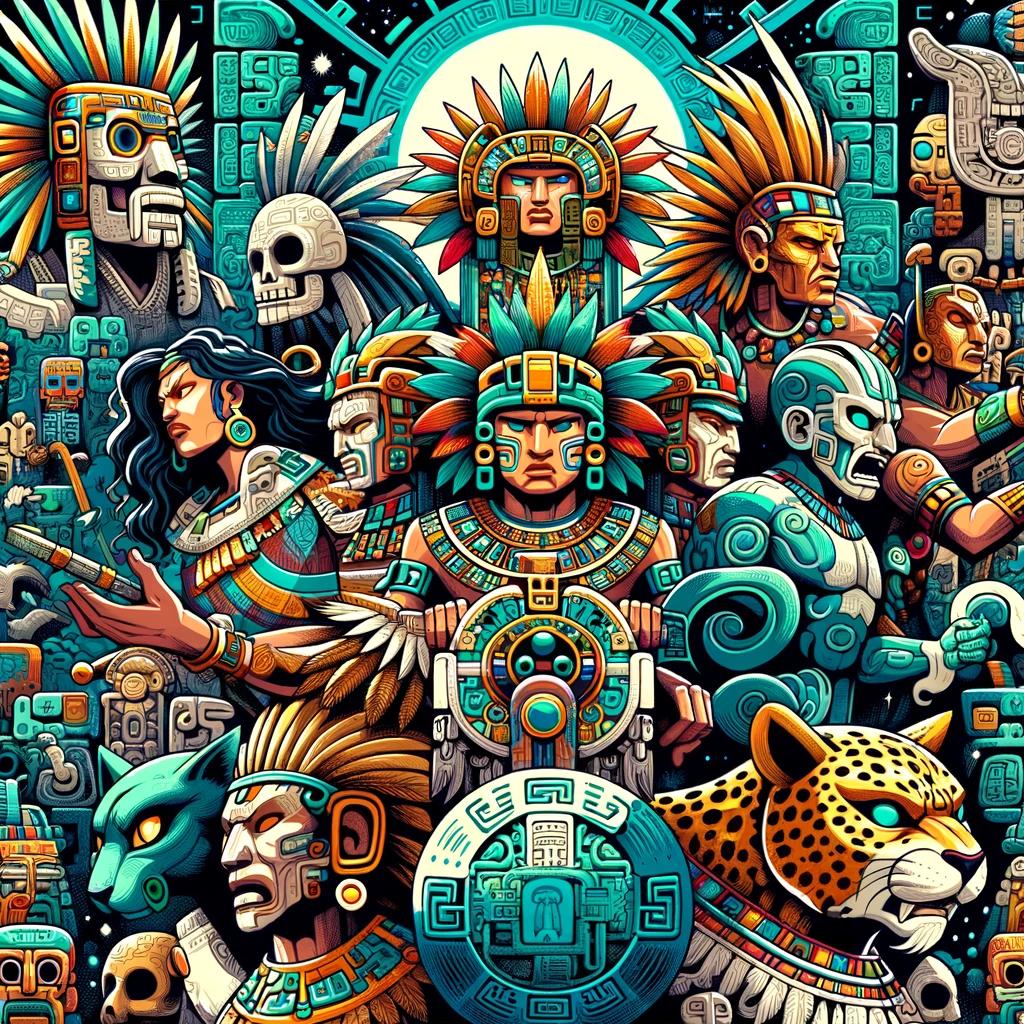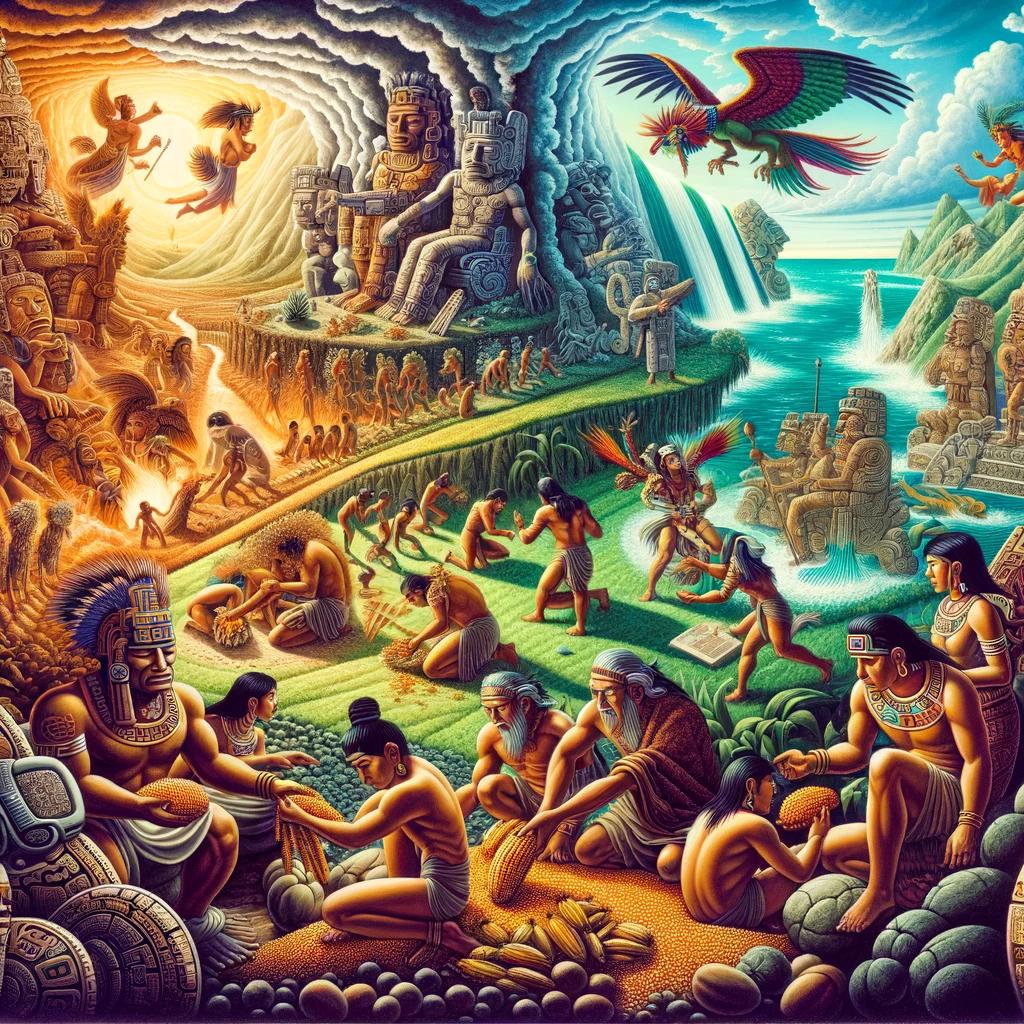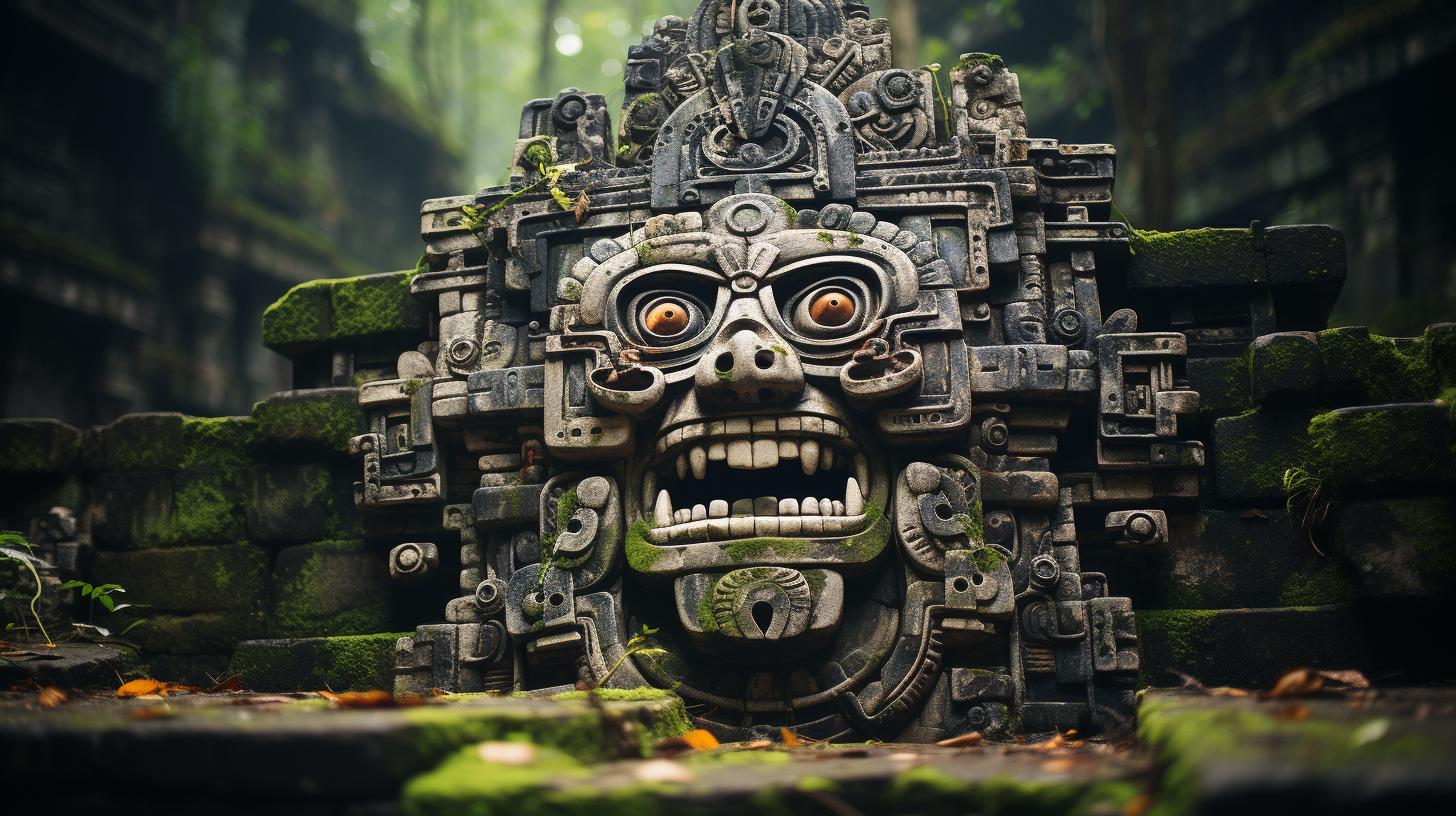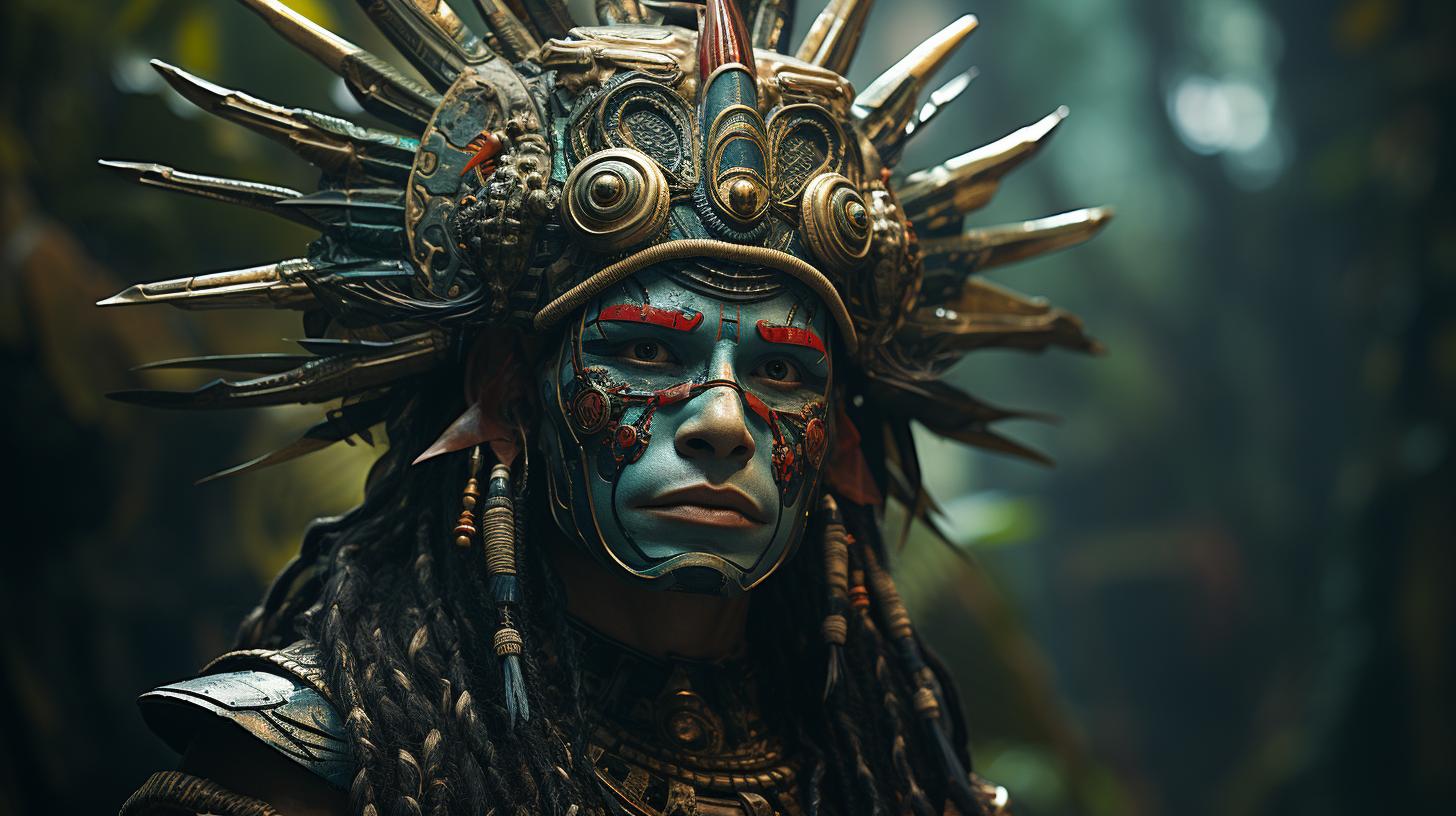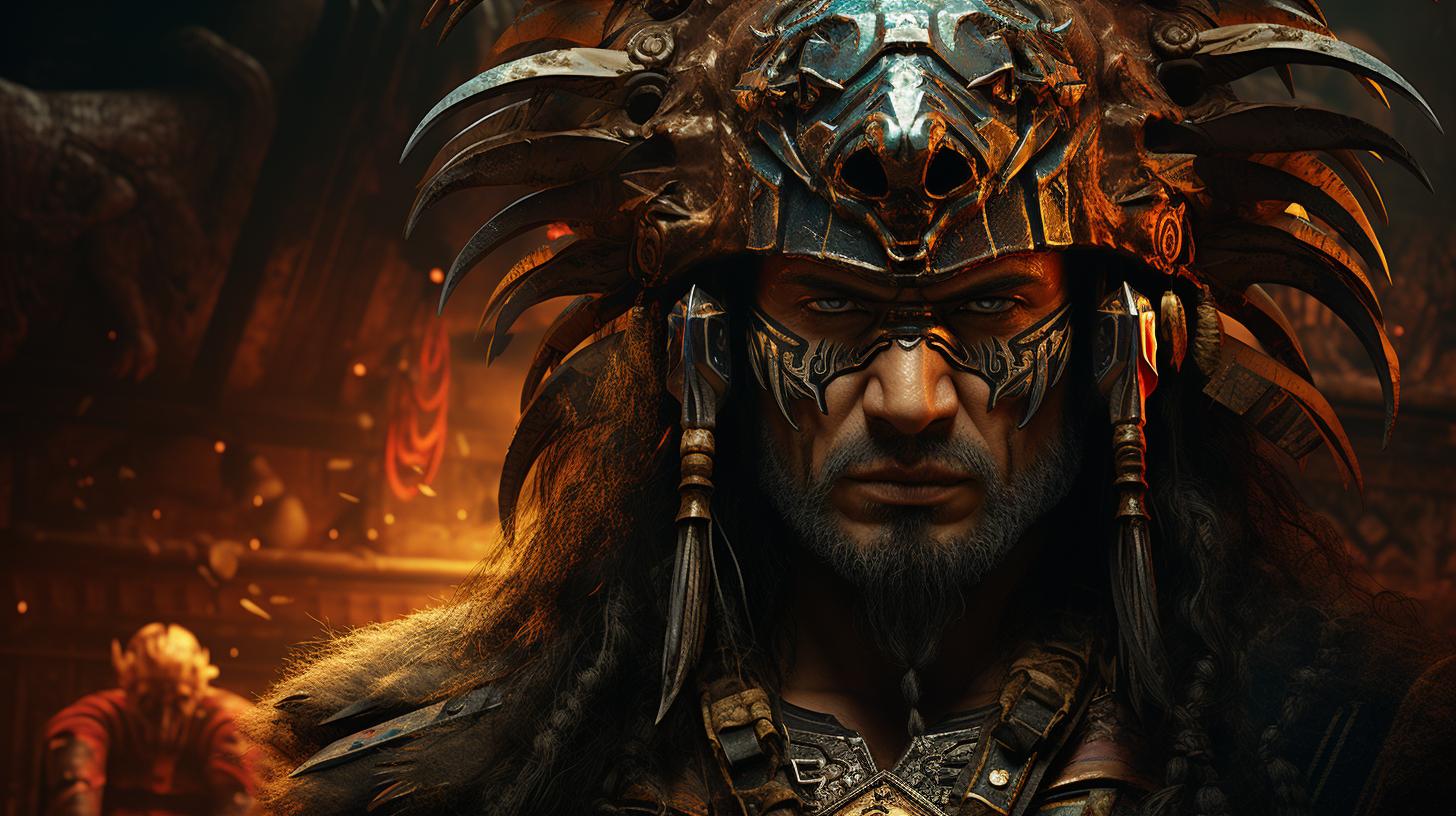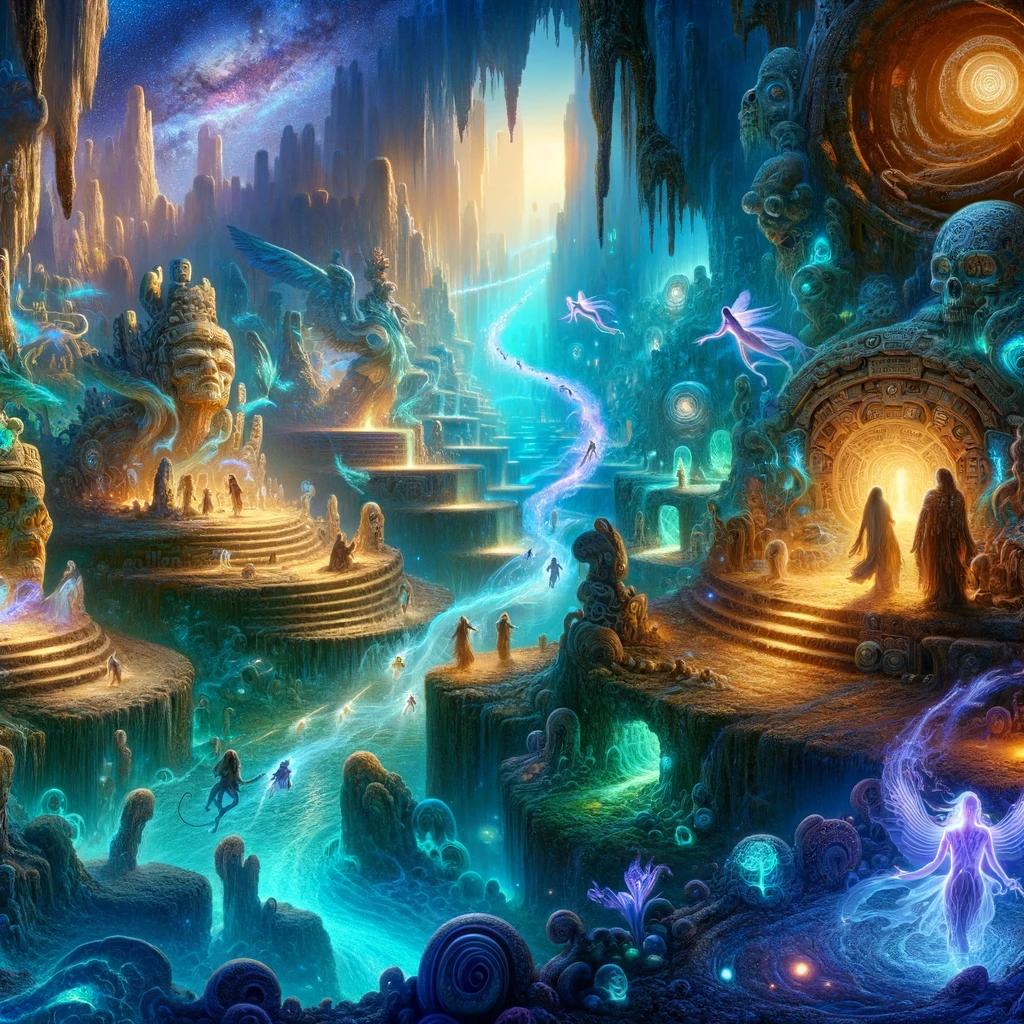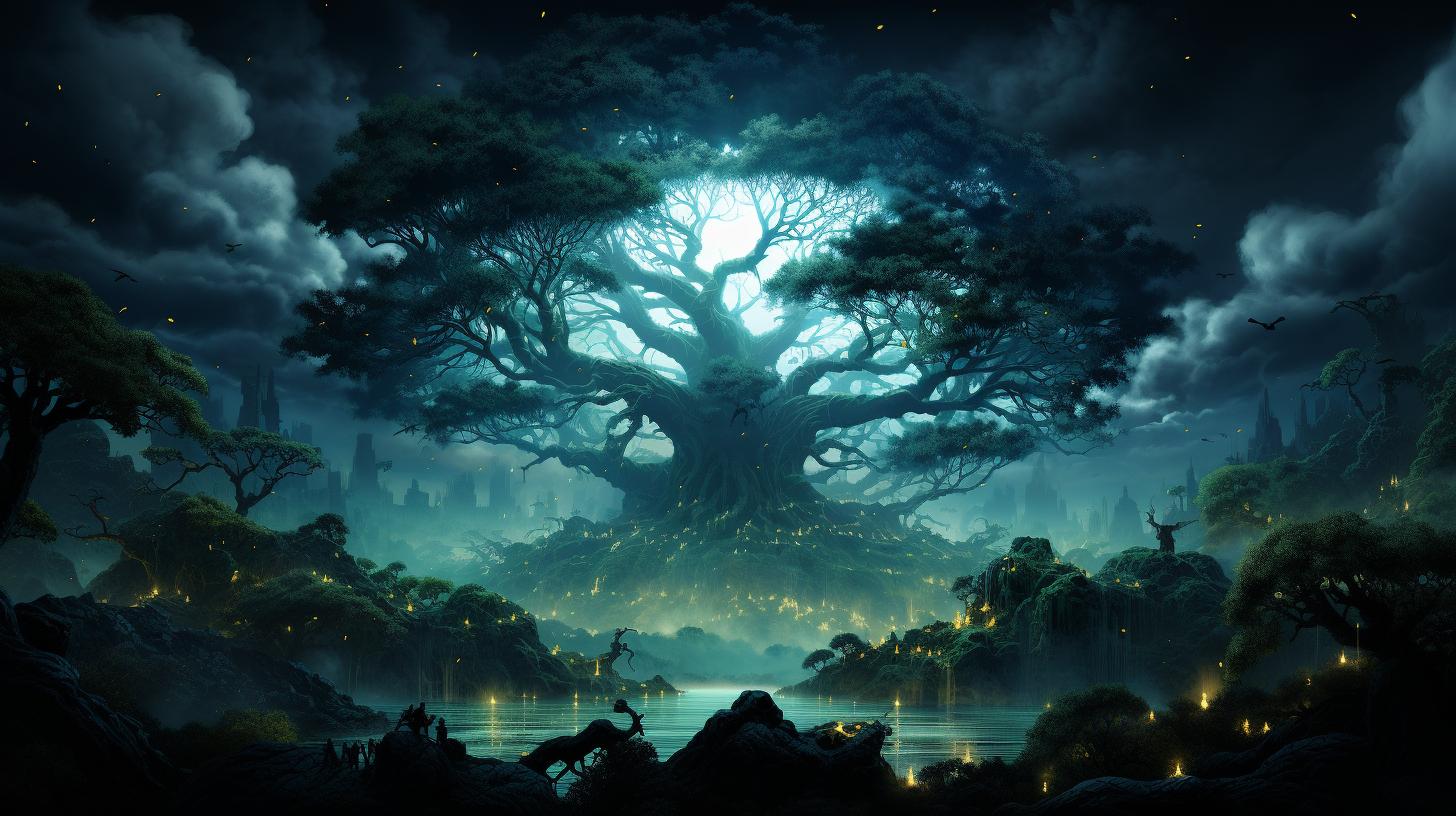Ix Tub Tun: The Undiscovered Jade Goddess of Maya Mythology
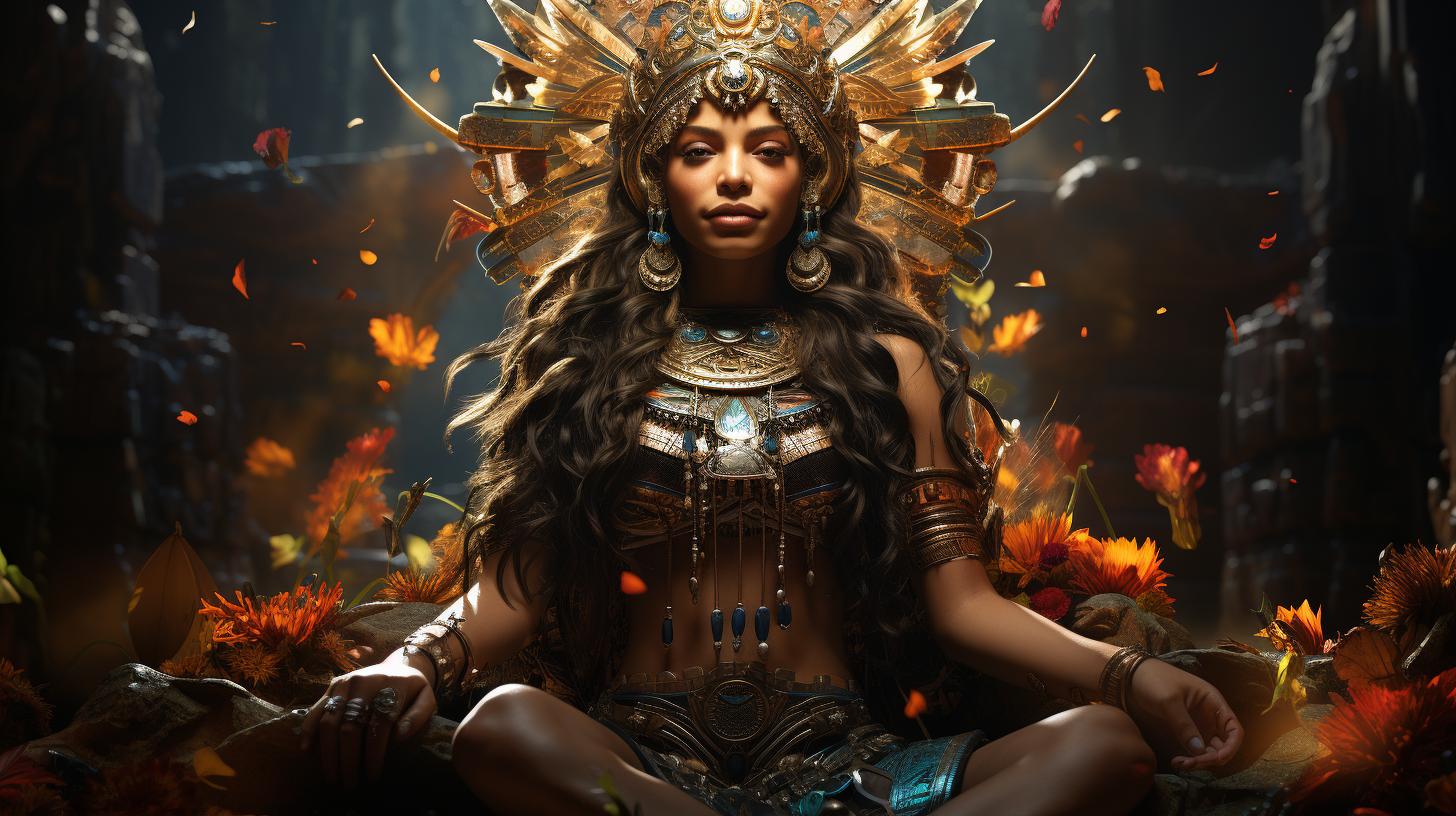
Ix Tub Tun is a revered deity in Maya mythology, known as the Jade Serpent. This ancient goddess holds significance as the patron of jade artisans, spewing precious stones.
Alongside the diverse pantheons of gods worshipped worldwide, such as the Aztecs, Greeks, and Egyptians, the Mayan gods played a vital role in the lives of the indigenous peoples of Mexico and Central America.
Explore the mythological tales, cultural impact, and interactive experiences involving Ix Tub Tun in Elite Dangerous and the game Smite. Discover the rich heritage and spiritual traditions of the Maya through this captivating exploration.
The Mythology of Ix Tub Tun
The mythology surrounding Ix Tub Tun is deeply rooted in Mayan culture and beliefs. This section explores her origins, role in Mayan mythology, symbolism of jade, and the worship and rituals associated with her reverence.
Origins and Role in Mayan Mythology
Ix Tub Tun holds a significant place in Mayan mythology, revered as a powerful deity with a specific domain. She is believed to be the patron of artisans who work with jade and other precious stones.
While her exact origin story is not provided, it is clear that she played an essential role in the pantheon of Mayan gods.
Symbolism and Significance of Jade
Jade holds great symbolism and significance in Mayan culture, and Ix Tub Tun is intimately associated with this precious stone. Jade was considered a sacred material and believed to possess spiritual powers.
It symbolized fertility, wisdom, and the cycle of life and death. Through jade, Ix Tub Tun symbolizes abundance, protection, and prosperity in the Mayan worldview.
Worship and Rituals Associated with Ix Tub Tun
Ix Tub Tun was worshipped by the Mayans through various rituals and ceremonies. Artisans specialized in working with jade and other precious stones would offer their creations as acts of devotion.
Ceremonies involving chanting, dancing, and sacred offerings were conducted to honor and seek the blessings of Ix Tub Tun. These rituals played a fundamental role in connecting the Mayan people with the divine and maintaining harmony within their communities.
Ix Tub Tun in Contemporary Culture
Ix Tub Tun, the Jade Serpent, has left an indelible mark on various aspects of contemporary culture. From art and literature to the realm of video games and fantasy literature, her presence can be felt across diverse mediums.
Let’s explore the depictions of Ix Tub Tun in different forms of art, her role in immersive gaming experiences, and the discussions surrounding cultural appropriation and representation concerns.
Depictions in Art, Literature, and Media
Ix Tub Tun’s captivating allure has inspired countless artists, writers, and creators to portray her in their works.
In paintings, sculptures, and illustrations, the goddess of jade emerges from myths and legends, capturing the imagination of audiences with her ethereal beauty and mystical powers. She also often appears as a character in epic fantasy novels and graphic novels, weaving her way into captivating tales of adventure and magic.
Ix Tub Tun in Video Games and Fantasy Literature
The gaming world has embraced Ix Tub Tun as a powerful and iconic figure. In popular video games such as Elite Dangerous and Smite, players can explore her story and wield her divine abilities.
Elite Dangerous introduces the immersive Ix Tub Tun system, where players can navigate through celestial bodies and experience the wonder of her domain. Meanwhile, Smite showcases Ix Tub Tun as a playable character, allowing gamers to embody her jade-infused powers and engage in exhilarating battles.
Cultural Appropriation and Representation Concerns
Discussions surrounding cultural appropriation and representation have emerged in regards to Ix Tub Tun’s depictions in various forms of media. It is essential to approach the portrayal of this Mayan deity with cultural sensitivity, respecting the rich heritage from which she originates.
Recognizing and addressing concerns about misinterpretation, stereotypes, and the commodification of indigenous traditions is crucial to foster respectful and accurate representations of Ix Tub Tun and her cultural significance.
Exploring the Elite Dangerous System: Ix Tub Tun
Embark on a thrilling expedition through the vastness of space as we delve into the enigmatic Ix Tub Tun system in Elite Dangerous.
This section provides a comprehensive overview of the system, showcasing its unique celestial bodies and bustling stations.
Overview of the Ix Tub Tun System
Located in the far reaches of the galaxy, the Ix Tub Tun system captivates explorers with its mesmerizing beauty and abundance of opportunities. Boasting a diverse array of planetary bodies and stations, exploring this system promises endless adventures.
Celestial Bodies and Stations in Ix Tub Tun
The Ix Tub Tun system boasts a total of eight celestial bodies, each offering its own set of thrilling possibilities. From a planet rich in precious metals to a mesmerizing water world reminiscent of Earth, the system’s celestial bodies are a sight to behold.
Beyond the planets, twelve stations serve as hubs of activity and commerce, providing a glimpse into the vibrant life within the system.
Notable Explorations and Achievements in the System
Since the release of Elite Dangerous, intrepid commanders have embarked on daring expeditions to uncover the secrets of Ix Tub Tun. One renowned explorer, Zak Starfall, holds the distinction of being the first to set foot in the system within the game.
Many other commanders have followed in his footsteps, seeking fame, fortune, and the thrill of discovery within the Ix Tub Tun system.
Whether you’re an experienced commander or a rookie pilot, the Ix Tub Tun system offers a wealth of opportunities for exploration and adventure.
Grab your spaceship, chart a course to this captivating system, and prepare for a journey that will leave you in awe of the wonders that await.
Ix Tub Tun as a Playable Character in Smite
Experience the power and grace of Ix Tub Tun, The Jade Serpent, as she enters the battleground of Smite.
This section delves into her introduction, abilities, gameplay mechanics, and the reception and impact she has had within the Smite community.
Introduction to ‘Ix Tub Tun, The Jade Serpent’
‘Ix Tub Tun, The Jade Serpent’ brings an exciting new addition to the roster of gods in Smite. As a revered deity in Maya mythology, Ix Tub Tun embodies the elegance and strength of the jade serpent.
Her arrival in the game expands the diverse range of cultural representation and immerses players into the fascinating world of Maya mythology.
Abilities and Gameplay Mechanics
Ix Tub Tun’s unique abilities showcase her connection to jade and serpent symbolism. Her passive ability, Jewel’s Radiance, grants her enhanced power as she collects radiant gems throughout the match. With her Jade Dart ability, she hurls piercing projectiles at her foes, inflicting damage and potentially poisoning them.
The Serpent’s Slide allows Ix Tub Tun to swiftly slither across the battlefield, enhancing her mobility and evasiveness.
In addition to her mobility skills, Ix Tub Tun can enhance her basic attacks with Jade Infusion, adding extra damage and potentially slowing her enemies.
Her ultimate ability, Razor-Sharp Gems, enables her to unleash a devastating wave of sharpened gemstones, causing significant damage to all foes caught in its path.
Reception and Impact in the Smite Community
Ix Tub Tun’s inclusion in the Smite roster has sparked excitement among players, particularly those drawn to the rich mythology and cultural significance behind the character.
Community discussions and forums have been buzzing with theories, strategies, and fan art inspired by this captivating addition.
The introduction of Ix Tub Tun showcases the dedication of the game developers to provide a diverse and engaging gameplay experience.
By incorporating gods and deities from different mythologies, Smite cultivates an immersive environment where players can explore and celebrate the world’s cultural heritage.
Join the ranks of players who have embarked on an epic journey with Ix Tub Tun, mastering her unique playstyle and unraveling the depths of her mythology.
Discover the captivating gameplay and the impact this enchanting deity has made in the dynamic Smite community.
The Mayan Pantheon and Its Deities
The Mayans had a rich and complex religious belief system, shaped by their deep understanding of the natural world and celestial bodies. Their cosmology consisted of multiple layers of existence, including the earthly realm, the underworld, and the heavens.
At the core of their religious beliefs was the worship of numerous deities, each with their own specific roles and attributes.
Overview of Mayan Cosmology and Religious Beliefs
Mayan cosmology was centered around the concept of a sacred tree that connected the different realms of existence. The Earth was seen as a flat surface with four corners, symbolizing the cardinal directions.
Above the Earth was the celestial realm, where the sun, moon, and stars resided.
The Mayans believed that these celestial bodies exerted significant influence over their lives and played a crucial role in their religious ceremonies.
They observed the movement of celestial bodies and celestial events such as eclipses to determine auspicious times for various activities.
Major Gods and Goddesses in the Mayan Pantheon
The Mayan pantheon consisted of a vast array of deities, each associated with different aspects of life and nature. These gods and goddesses were often depicted with distinct attributes and symbols.
Some of the prominent deities in the Mayan pantheon include:
- Itzamna: The supreme god associated with creation, wisdom, and knowledge.
- Chac: The rain god responsible for agricultural fertility and the sustenance of life.
- Ix Chel: The goddess of the moon, fertility, and childbirth.
- Kukulcan: The feathered serpent god associated with wind, rain, and agriculture.
- Hunab Ku: The cosmic deity representing the ultimate divine force and the source of all creation.
Functions and Influences of Mayan Deities in Society
Mayan deities played a vital role in the social and religious life of the ancient Maya civilization.
They served as intermediaries between mortals and the spiritual realm, providing guidance, protection, and blessings. Mayans believed that by honoring and appeasing the gods through rituals and offerings, they could maintain harmony with the natural world and ensure the well-being of their communities.
The gods were intricately woven into various aspects of daily life, from agriculture and hunting to marriage and childbirth. Rituals and ceremonies were conducted to seek the favor of deities, invoke their powers, and ensure the success of important endeavors.
The construction of monumental temples and pyramids was often dedicated to specific gods, showcasing the significance of religion in Mayan society.
- The Mayan pantheon consisted of a vast array of deities.
- Key deities included Itzamna, Chac, Ix Chel, Kukulcan, and Hunab Ku.
- Mayan gods played a vital role in social and religious life.
- They provided guidance, protection, and blessings.
- Rituals and offerings maintained harmony with the natural world.
- Gods influenced agriculture, marriage, hunting, and more.
- Monumental temples were dedicated to specific gods.
Cultural Importance and Preservation Efforts
The cultural importance of Mayan mythology within indigenous cultures cannot be overstated.
It serves as a profound source of identity, spirituality, and connection to their ancestral roots. Mayan mythology reflects the cosmological beliefs, moral values, and societal structure of the ancient Mayan civilization.
Significance of Mayan Mythology in Indigenous Cultures
Mayan mythology holds deep significance in the lives of indigenous communities throughout Mexico, Guatemala, Belize, El Salvador, and Honduras. It provides a framework for understanding the world and one’s place within it.
These myths narrate the origin of humanity, explain natural phenomena, and offer guidance for navigating ethical dilemmas.
Challenges in Preserving and Reviving Mayan Traditions
Despite the profound importance of Mayan mythology, preserving and reviving these traditions face significant challenges. The colonization, forced conversion, and cultural assimilation imposed by European powers have led to the erosion of indigenous practices and knowledge.
Additionally, globalization, modernization, and socio-economic pressures pose threats to the continuity of Mayan traditions.
Efforts to preserve and revive Mayan traditions require navigating complex dynamics, including language revitalization, intergenerational transmission, and cultural revitalization initiatives.
Collaborative partnerships between indigenous communities, scholars, and cultural organizations play a vital role in safeguarding and transmitting Mayan mythology to future generations.
Modern Initiatives and Organizations Supporting Mayan Heritage
Various initiatives and organizations are actively working towards supporting Mayan heritage and promoting cultural sustainability.
They provide platforms for indigenous voices, create educational resources, organize cultural festivals, and advocate for the protection of sacred sites and cultural artifacts. These initiatives aim to empower indigenous communities to reclaim their heritage and foster cultural pride.
- Mayan Heritage and Cultural Centers: Organizations such as the Mayan Cultural Foundation and Instituto Nacional de Antropología e Historia (INAH) establish community centers and museums dedicated to preserving and sharing Mayan culture.
- Language Revitalization Projects: Efforts are underway to revitalize Mayan languages through language immersion programs, documentation, and the integration of indigenous languages in education.
- Educational Outreach: Schools, universities, and cultural institutions collaborate to develop educational programs focusing on Mayan mythology, history, and cultural practices.
- Cultural Tourism: Sustainable tourism initiatives provide economic opportunities for indigenous communities while promoting the preservation of cultural traditions and heritage sites.
The tireless dedication of individuals, communities, and organizations ensures the continued vibrancy of Mayan mythology, allowing it to serve as a beacon of cultural pride, connection, and spiritual guidance for generations to come.
Frequently Asked Questions about Ix Tub Tun
What does Ix Tub Tun represent in Mayan mythology?
In Mayan mythology, Ix Tub Tun represents the Jade Serpent and is revered as the deity patron of artisans who work with jade and precious stones. She is known for her ability to spew forth jewels and holds great significance in the Mayan pantheon.
How is Ix Tub Tun portrayed in different mediums?
Throughout various artistic mediums, Ix Tub Tun is portrayed as a powerful and radiant figure adorned with jade and other precious stones. In drawings, paintings, and sculptures, she is often depicted as a serpent with jade scales or as a divine being surrounded by sparkling gems.
Can I visit the Ix Tub Tun system in Elite Dangerous?
Absolutely! The Elite Dangerous game features the Ix Tub Tun system, which is a habitable system with a variety of celestial bodies and stations. As a commander, you can explore this system, discover its unique features, and engage in exciting adventures.
How is Ix Tub Tun’s character balanced in Smite gameplay?
Ix Tub Tun, featured as “The Jade Serpent” in the game Smite, possesses a balanced set of abilities. Her passive ability enhances her basic attacks with radiant jewels, while her other abilities include the ability to launch jade darts, slide like a serpent, and unleash sharp gem projectiles.
Her character is designed to provide an engaging and skillful gameplay experience while staying true to the deity’s mythological representation.
.

